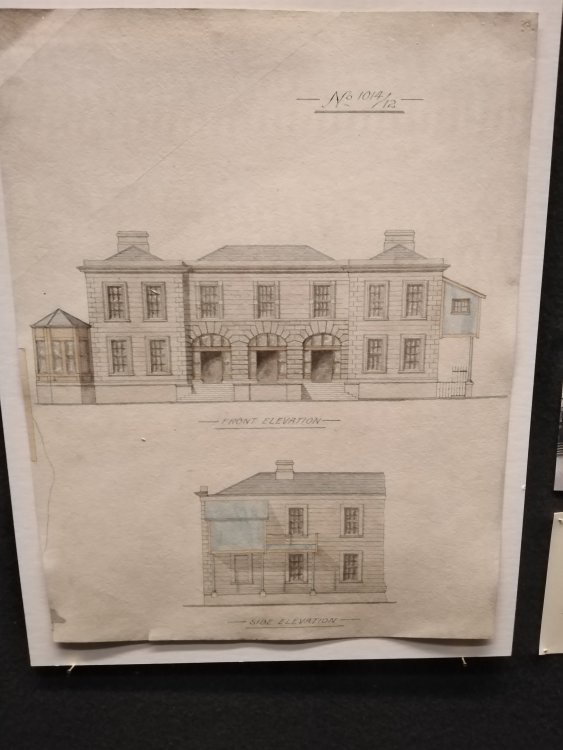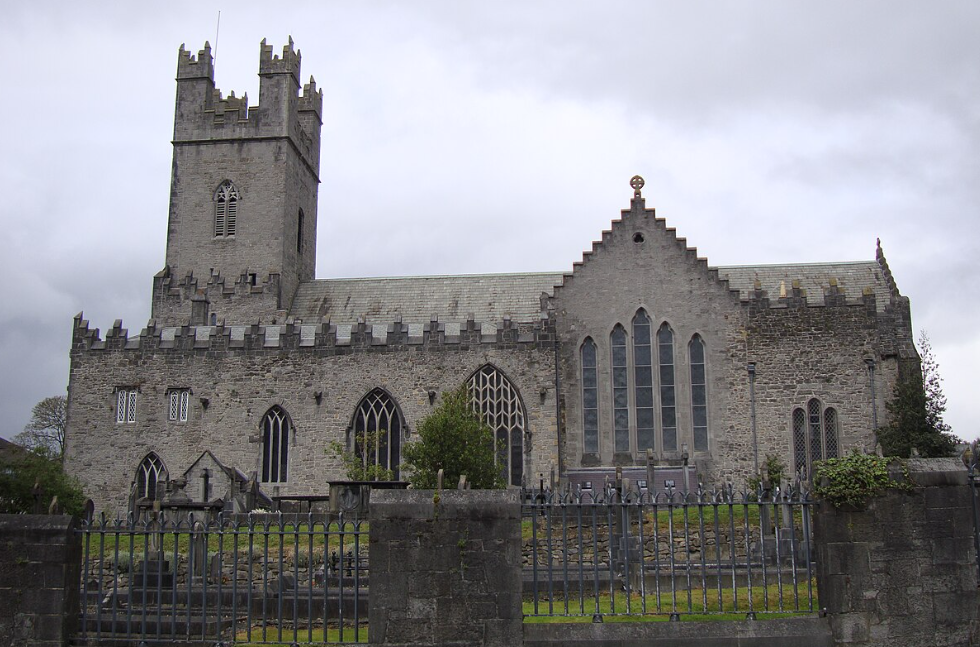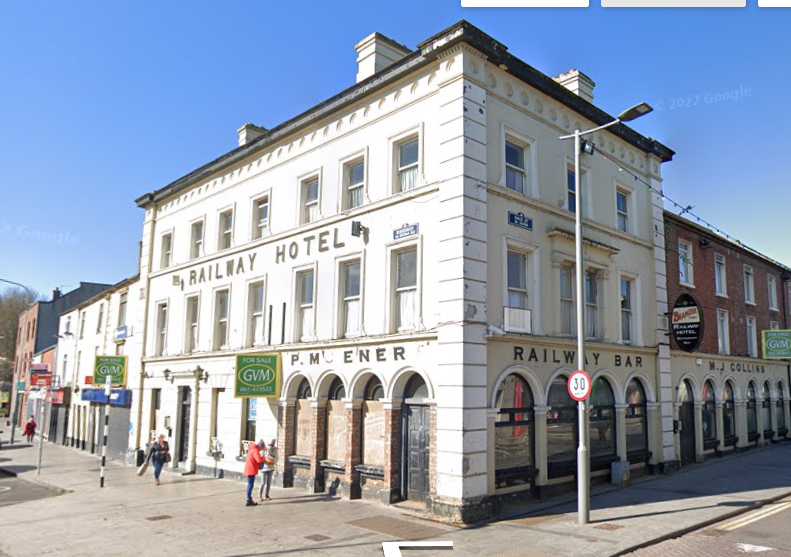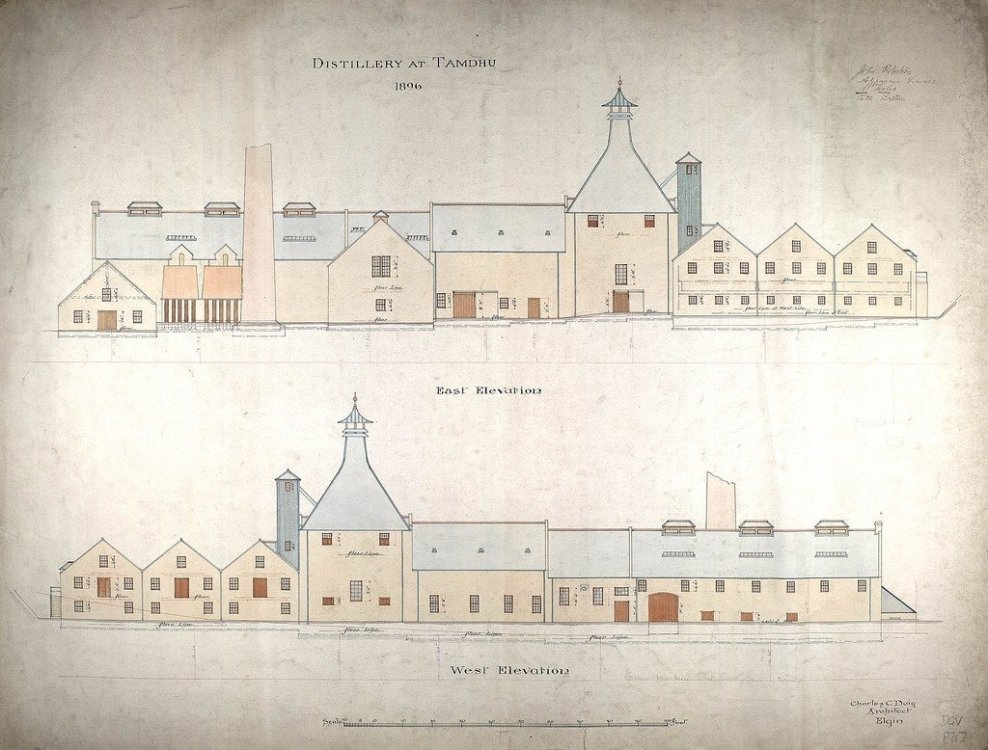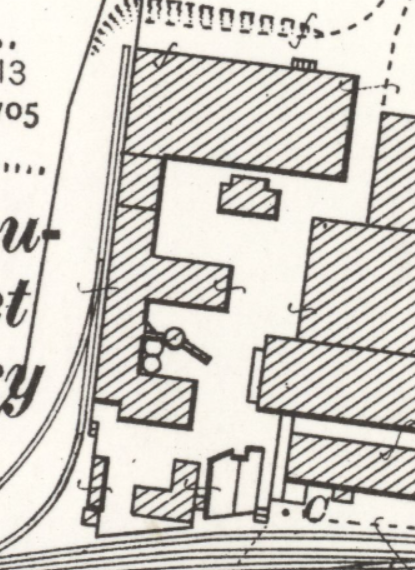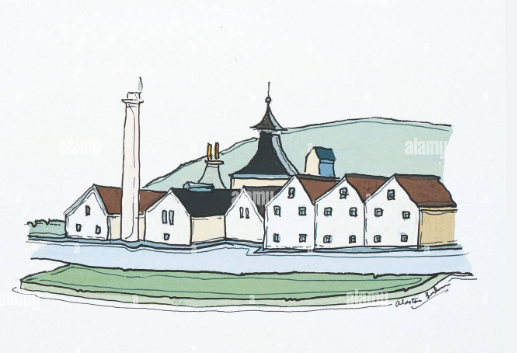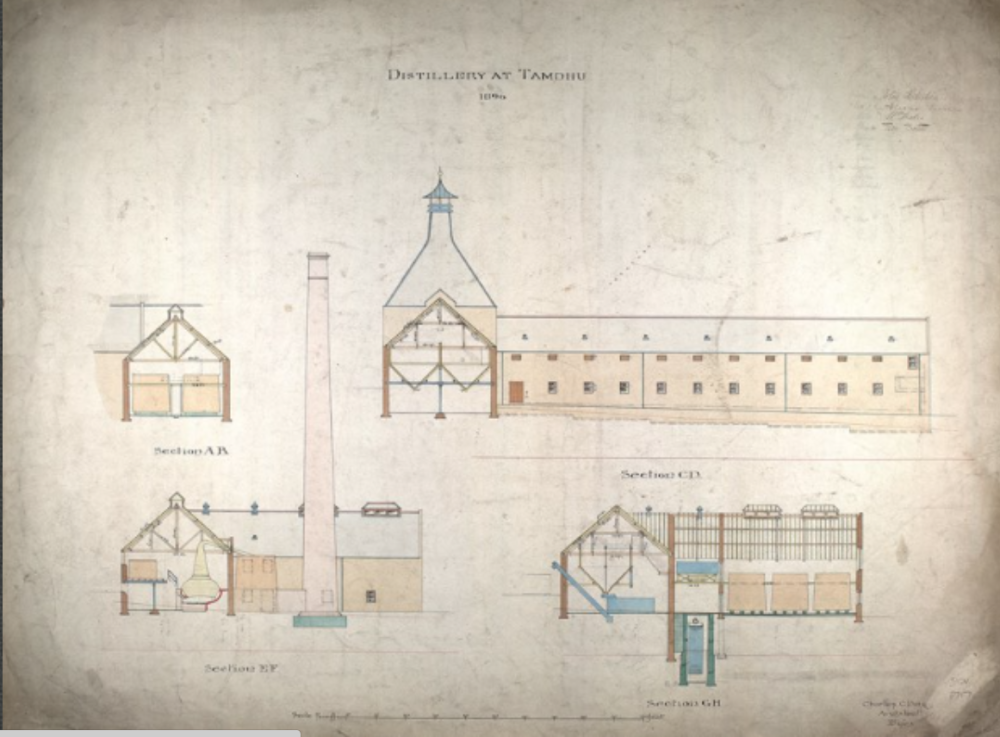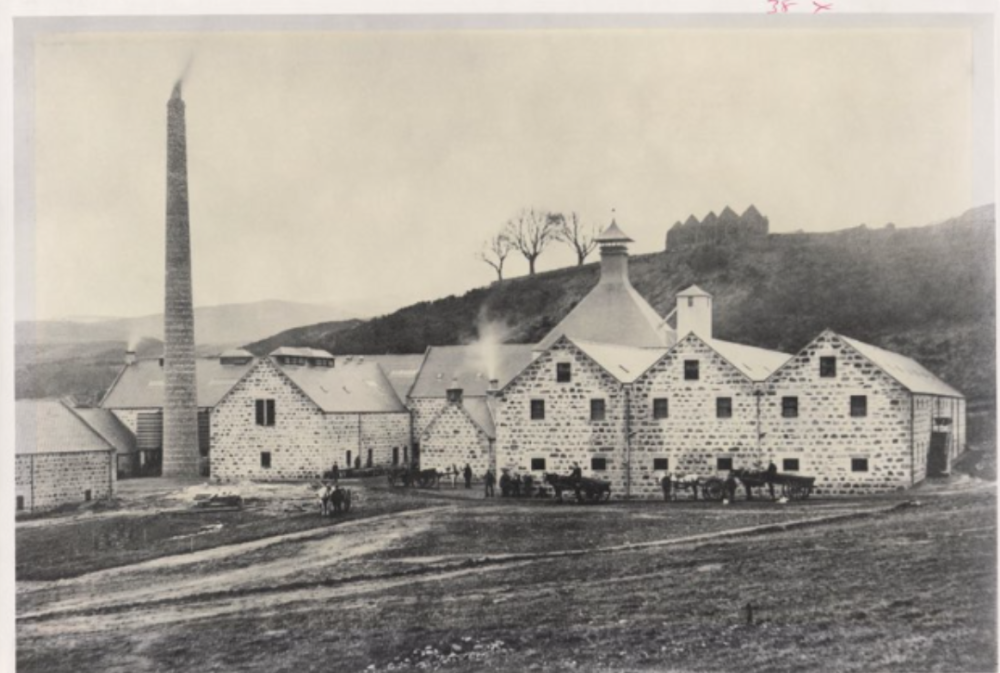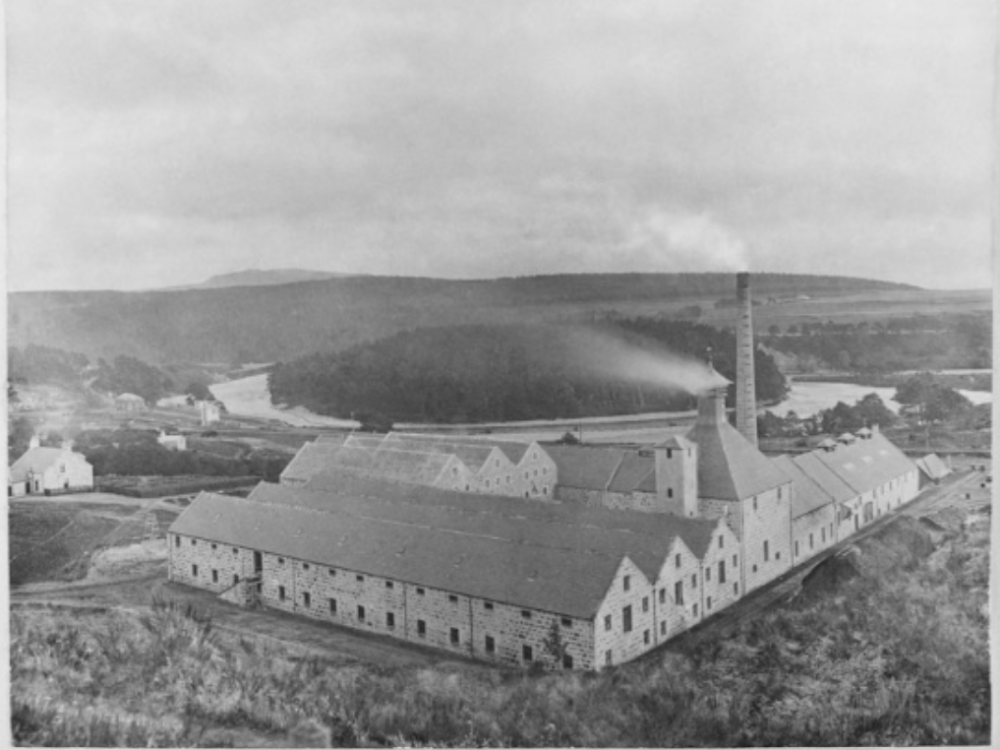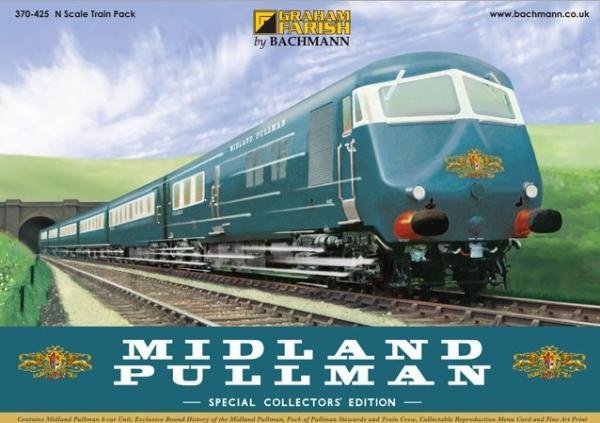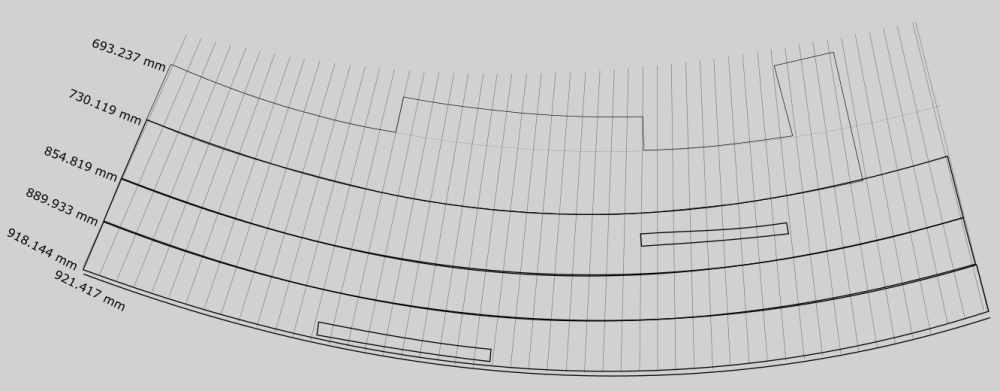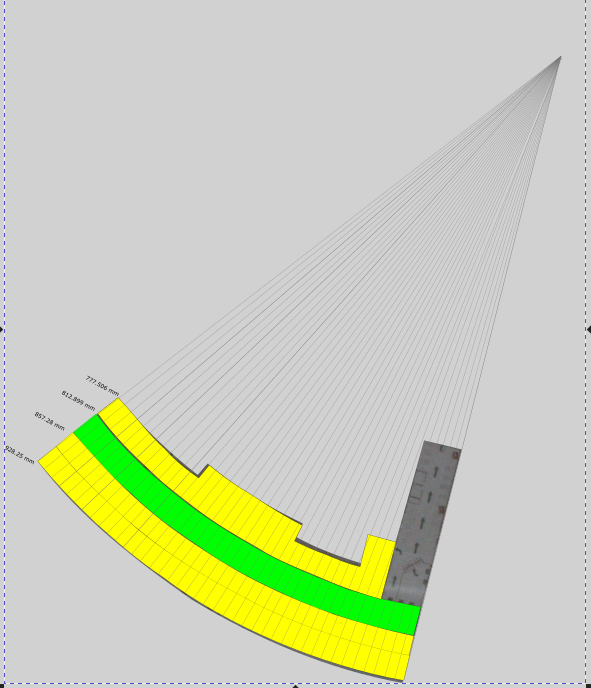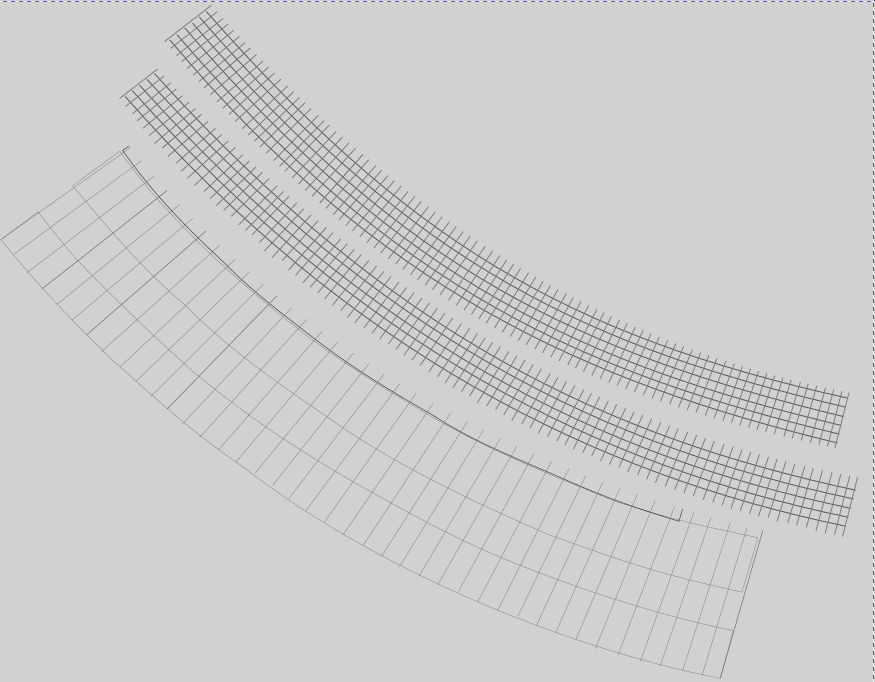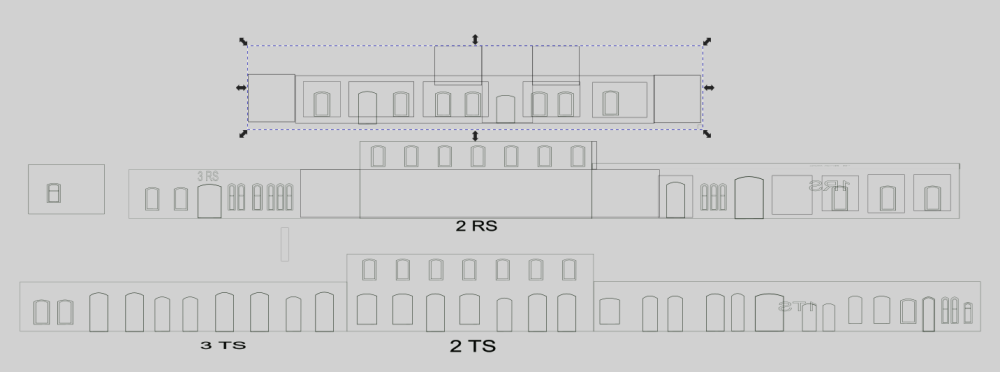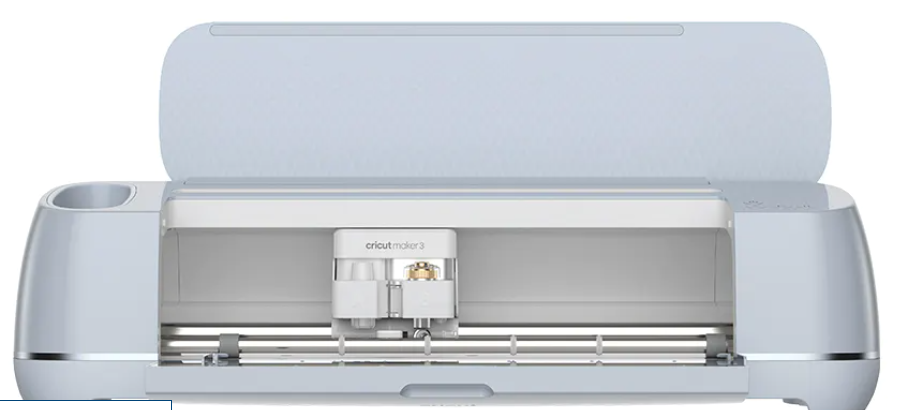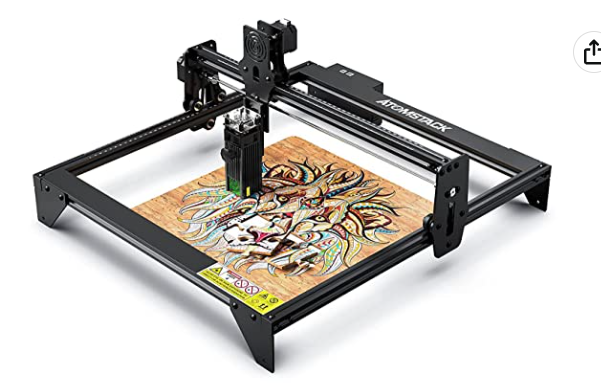
Kevin Sweeney
Members-
Posts
255 -
Joined
-
Last visited
-
Days Won
10
Content Type
Profiles
Forums
Events
Gallery
Blogs
Store
Community Map
Everything posted by Kevin Sweeney
-
N Scale Ballywillan, Co Longford.
Kevin Sweeney replied to Kevin Sweeney's topic in Irish Model Layouts
I'm working on the Distillery and have really come to appreciate the Cricut cutting machine. It banged out this set of parts in about 20 minutes last night, while I drank coffee. It would have taken many, many hours to cut this lot out by hand. -
N Scale Ballywillan, Co Longford.
Kevin Sweeney replied to Kevin Sweeney's topic in Irish Model Layouts
I'm also thinking Limerick, but made as a through station, with a train shed. I have a drawing of it, I got at the Irish Architectural Archive exhibition last year. I love Limerick, it's a beautiful city, now that you mention it I'm thinking maybe of basing the city section on Limerick. Lots of great Georgian architecture, and beautiful buildings like the Hunt Museum and St Mary's Cathedral. I like the Railway hotel as well. -
N Scale Ballywillan, Co Longford.
Kevin Sweeney replied to Kevin Sweeney's topic in Irish Model Layouts
I've been learning the ropes with Anyrail software the last few days. This is what I've come up with so far. I have also started to lay some cork trackbed. This is the track plan for the rural section. The distillery will be the centre piece. There will be a country station, I haven't yet decided what, but I'm leaning towards a Great Northern station, as I like the fancy brick work on many of them. As I posted before the track will be flat, with rising ground towards the back and sides, hills will hide the track at the back. I'm going to put a removable roof over the storage yard at the back, in which I will store 4 trains. I thought it would need to be open for operations. But the new plan is to put in isolated section at each end of the storage tracks, so the trains will stop automatically when they arrive in the yard. Presuming I remember to throw the isolation switch. In the bottom left is the branch line which will go to the other baseboard, on the other side of the room. There will access to the branch line from both the inner loop (at the back) and the outer loop (at the front) This will be the urban section. The track plan here is still very basic and will be developed further. The branch line comes in at the top left and crosses a valley on a curved viaduct. The valley floor will be a small inlet. I going for a double tracked through station, maybe with a train shed. After going through the station the trains will go round a non scenic, turning loop and head back towards the branch line. The double track section on the left will be an unpowered dead end, just there to look good. It will also cross the valley on a straight viaduct. I think this plan has everything I want, continuous running, end to end operations, and lots of shunting in the port. I will also be able to operate it on my own, and if I should find a willing partner, it can be operated by two people. The priority is get the rural section completed before moving onto the city section. The buildings on the city section will take years to complete The urban station will include an engine shed for my steam trains and a diesel depot. I will probably use Scalescenes kits for those. Scalescenes Diesel Depot I made some years back. I will also use the Scalescenes ship kit for the port. I will probably try a kit bash as well and make a cattle ship, which will allow me to run cattle trains between the country station and the port A Scalescenes trawler or two will be moored at the port. Also maybe a life boat, again from Scalescenes. Also available is a Lifeboat station with a slipway, which would be a nice addition. I have some work done already on a dockside crane. -
N Scale Ballywillan, Co Longford.
Kevin Sweeney replied to Kevin Sweeney's topic in Irish Model Layouts
The internet is an amazing research tool. I went looking for a distillery and in about 20 minutes I found what I was looking for, the Tamdhu Distillery in Scotland. In another 20 minutes I had downloaded plans, drawings, photos and a map. The model will be 500 mm long and 300 mm wide. I will have to add a small extension at one end of the baseboard to accommodate it, but this will be a wonderful centre piece for the layout. -
N Scale Ballywillan, Co Longford.
Kevin Sweeney replied to Kevin Sweeney's topic in Irish Model Layouts
I would be mainly operating while seated. I like the sky idea, a lot simpler than a cliff face. I could line its base with trees and shrubs and not need the countryside in the distance at all. The small dioramas were good practice, but I'm looking forward to working with a much bigger canvas. -
N Scale Ballywillan, Co Longford.
Kevin Sweeney replied to Kevin Sweeney's topic in Irish Model Layouts
I finally got a baseboard built and am ready to start laying track. I purchased Anyrail software which I find very good. This will be the first part of my layout which will be rural. It's 4.8 meters long by 0.8 wide. The track will be flat but the ground will be hilly rising towards the back of the layout. I'm using set track for the curves and flex track for the straights. The track at the back will be hidden behind the hills and maybe covered with a lid of removable scenery, in case of derailments. The storage yard at the back, will need to be visible for operations so I'm thinking of a cliff face to hide it behind. There will be big hills at both ends and the track will emerge from tunnels at both ends. The buildings will include, a stately home (Bellmont), two farmhouses, a country station (not Ballywillan, maybe Crossdoney), a pub (Gilligans at Ballywillan), a shop (my Great Grandmothers shop), an Anglican church and Glebe house, a creamery (Graignamana), a crossing keepers cottage, a labourers cottage and a distillery (yet to be built). There will be a main road running the length of the layout roughly parallel to the track, a cross roads and a side road with a level crossing. I have an area on the other side of the room which will allow me another baseboard about 2/3 the size of this one. The plan is a single track branch line, starting at the back of this board, crossing the mainline, running along the adjoining wall (non scenic), and ending at a terminus station, probably based on Sligo or Limerick. This section will be urban and include a port, and a curved viaduct. An urban scene will give me lots of scope to indulge in my passion for making buildings. With a distillery on one side of the room and a port on the other, I can operate freight trains between the two. I'm looking forward to getting the track down and finally getting to run trains. Even though all the building will be Irish, all my rolling stock is British. The storage yard will hold seven trains. Bellmont House will be on a hill. The big shots looking down on the plebs. The bridge top left will carry the branch line over the main line and on to the city. Can't wait to get some of these running, They have all been run in, but most have never hauled a coach or wagon. My pride and joy. Still in the box, never even been run in. Really can't wait to see this beauty in action.- 410 replies
-
- 11
-

-
N Scale Ballywillan, Co Longford.
Kevin Sweeney replied to Kevin Sweeney's topic in Irish Model Layouts
I got distracted again, this time by Cavan Town Hall. Built in 1901 as the HQ of Cavan Urban Council, it it now the towns arts centre. I made my stage debut here in a boy scout pantomime in the mid 1970s. Making good progress with the build so far.- 410 replies
-
- 12
-

-

-
N Scale Ballywillan, Co Longford.
Kevin Sweeney replied to Kevin Sweeney's topic in Irish Model Layouts
I've gone back to the beginning of this thread and am back working on Ballywillan. I'm going to complete it as a diorama. The baseboards are made from 2 mm greyboard, which gives a very strong and light structure. The baseboards will be in two parts. Tracks layed and ballasted. Next the platforms. -
Mullingar Athlone still has one derelict track in place, if they want to go double track they will have to kick the cyclists off. This is the one I'm really interested in as this would give me quick easy access from Edgeworthstown to Galway and Mayo, where I visit family, and holiday. The plan looks great and it certainly changes the debate about Irish transport policy. It is also a long overdue admission that the roads dominated transport policy of the last 70 years was a mistake. As a Cavan person who often argued with my friends and neighbours that we Cavan people should stop lamenting the destruction of our railway and start demanding its restoration, this report is manna from heaven. Up to now the idea would be dismissed as a hopeless dream, with this report that is no longer the case. It is only a line on a map so far but at last the idea is now out there, that there is nothing unreasonable or impossible about the idea of restoring Cavan's railway. This report will strengthen the hand of all us railway advocates in the border counties. The problem of course is delivery, if they are projecting 13 years to plan and build the Navan Dublin line, this plan will take at least a century to complete. My children, or grandchildren might eventually catch a train from Cavan, but I doubt I will. The one oddity is that it will leave Fermanagh as the only county with no railway. Why no line from Omagh to Claremorris, that would give us a west coast mainline.
-
N Scale Ballywillan, Co Longford.
Kevin Sweeney replied to Kevin Sweeney's topic in Irish Model Layouts
I'm still working on the funding for Cavan station. In the meantime I completed this small diorama of Tully Methodist Church, KIlnaleck, Co Cavan.- 410 replies
-
- 14
-

-
The Harcourt Street station house was 362 feet long by 138 feet wide. In OO this building would have a footprint of 1.448 metres by .552 metres. That would be a tight enough squeeze in the space available. In OO it would need 2 metres to accommodate the full width of the station. You could half that with N scale, but there is no Irish rolling stock available in that scale. Starting a modelling career by scratch building a big station like Harcourt Street would be incredibly ambitious, a bit like learning to fly in a fighter jet rather than a Cessna. Dundrum or Foxrock would be a more realistic project to learn the craft and a better fit for the space available. If you want to try card modelling for making buildings, Scalescenes have some free download kits. I started my modelling career with the free Scalescenes coal office. I spent several years building Scalescenes kits before I moved on to scratch building. As a scratch builder i have developed many techniques of my own, but my basic method is still based on the Scalescenes method. R024 Weighbridge/Coal Office - Scalescenes I know you are anxious to get cracking and do some great modelling, but realistically you are at the beginning of a very long road, you face many steep learning curves in the years ahead. I love modelling because it is such a contrast from the instant gratification and speed of the modern world. All progress in modelling comes from slow, diligent, application, there are no quick wins. You can build a model of Harcourt Street, all that stand between you and that goal is acquiring the technical and artistic skills to do it. But that will take time. In my early years modelling I was always in a rush to see a finished product and would cut corners to speed things up, time has taught me the virtue of patience. I would also endorse Flying Snails suggestion to check out the Chandwell Youtube channel. Michael at Chanwell is the man who sets the standards I aspire to achieving. For some practical tips on surveying a building you want to model, check out the second half of this classic BBC Model World video.
- 58 replies
-
- 4
-

-

-
- 1950s to 1990s irish railways
- harcourt street line
- (and 3 more)
-
That train looks great, I am certainly in the market for that if it comes out in n gauge.
-
N Scale Ballywillan, Co Longford.
Kevin Sweeney replied to Kevin Sweeney's topic in Irish Model Layouts
Kent Station is on hold. I'm working with a good friend, who is a professional artist, to put together a funding proposal to make a diorama of Cavan station for public display. As a part of this I made a farmhouse and outbuildings, as a time and motion study. This model has taken 15 hours so far. It took exactly 4 hours to do the Inkscape drawings. An hour to cut the parts out, by hand, and 9 hours to build. Only the downpipes, sills and chimney pots are left to do. So another hour should finish it. I was away for a few days last week and spent a day in Cork. I done a further survey of Kent, and discovered that there is an alarming lack of consistently in the building. For example windows that look the same can have a 4 inch difference in width. When in Cork I also went out to the Lee Road and surveyed the Old Water Works. To my eyes this is the most beautiful industrial architecture in Ireland, with its mix of limestone, sandstone and brick. A sublime masterpiece. It is near the top of my list of future projects. The architect Sir John Benson also submitted an unsuccessful plan for Kent Station based on the Houses of Parliament on College Green.- 410 replies
-
- 13
-

-

-
N Scale Ballywillan, Co Longford.
Kevin Sweeney replied to Kevin Sweeney's topic in Irish Model Layouts
Slow progress, so far. It was the curves of Kent that seduced me and Scahalane warned me that everything would take three times as long because of the curves. He was correct. It has been a very steep learning curve (pun intended) so far. There are still a lot of design and construction problems to be solved, so slow progress will be the order of the day for a while yet. Given the scale of this project, I may complete it over a few years rather than in one year, which will allow me to work on other smaller projects in the mean time. I have several smaller projects in mind, including the oldest house in my parish, a plantation building, which dates back to the late 1600s or early 1700s. Unfortunately the days are getting longer and the garden is going to have to get some attention soon. I hate the way real life impinges on modelling. -
N Scale Ballywillan, Co Longford.
Kevin Sweeney replied to Kevin Sweeney's topic in Irish Model Layouts
Finally got the cutting machine operating, have been wasting lots of time and material playing with it. But I have begun work on the platforms. I'm making a framework 12 mm high for the platforms (and the main building), using 1 mm card. I'm able to cut out the parts on the cutting machine. they are a good fit so I can assemble them dry, shape them on the plan, making sure to get the curve right. Only then do I glue them A 1 mm sub platform will go on top and it's finished off with the platform texture sheet glued to 200 gsm cards. There will be a 1 mm thick wall trackside. This assembly will be glued to the baseboard. This is all fairly straightforward, except for the subway ramps in both platforms which require custom sections. I'm delighted with the cutting machine. The ribs and stringers required to make these platform structures would take many, many hours to cut by hand. Once I get the hang of it, it should be possible to cut out the main parts of an average model in 15 minutes. Planning to build a big structure like Kent is an interesting learning curve in it self. On a smaller model a small error in scaling at the beginning will be a minor error at the end. On a huge building like Kent a small error at the beginning will be a big error at the end. So my planning, scaling and design skills are being tested like never before. And that's not to mention the curves. It's been two and a half weeks, of drawings, mapping, surveying and testing. But it's now time to start building. Below a few shots of the modest progress. -
N Scale Ballywillan, Co Longford.
Kevin Sweeney replied to Kevin Sweeney's topic in Irish Model Layouts
More drawings I've redone the converging line drawing and I now have a definitive plan. There will be 52 trusses. Doing this drawing was conceptionally very useful. At the start I saw the building as a long curve, viewed from the Dublin or Cobh end. I now see it from the river side view, as a series of slices. This makes it easier to envisage and hopefully to build. I have a few more days to work at drawings and will hopefully have my drawings and cutting machine ready within the week. And then the building will commence. -
N Scale Ballywillan, Co Longford.
Kevin Sweeney replied to Kevin Sweeney's topic in Irish Model Layouts
I have some more drawings done. i created a drawing with lines converging on a vanishing point. This allowed me to design the finished platform texture sheet (top two items in photo below), and also a template for the train shed roof. My roof will have 41 trusses. I will use the template when assembling the roof. It's coming along nicely. I got my cutting machine today. I'm awaiting a further delivery before i can test it, but it is talking to my pc. -
N Scale Ballywillan, Co Longford.
Kevin Sweeney replied to Kevin Sweeney's topic in Irish Model Layouts
I'm well on with the basic Inkscape drawings for the main building, maybe 65% there. It was an epic day of counting bricks. More brick counting tomorrow. I have a ready made baseboard, made of 2mm greyboard, a left over baseboard, from my first temporary shelf layout. I have cut out a template of the trackbed, from 2mm greyboard. I will also cut out templates of the platforms and the main building. -
N Scale Ballywillan, Co Longford.
Kevin Sweeney replied to Kevin Sweeney's topic in Irish Model Layouts
When I told my wife about cutting machines, she said is that cheating. It maybe but it will be a blessing for my late middle aged eyes and hands, and should allow me to go on modelling for many years to come. Yes they seem like an amazing machine, for many different kinds of crafts. -
N Scale Ballywillan, Co Longford.
Kevin Sweeney replied to Kevin Sweeney's topic in Irish Model Layouts
I spent the day researching laser cutters and decided instead to buy a cutting machine. I'm going to buy a Cricut Maker 3 cutting machine. It will cut out the 1 mm mountboard, just like a laser cutter but it will also cut out texture sheets and windows, unlike a laser cutter. It is a much safer machine, no risk of blinding myself or the cats with it. It has no fire risk and produces no fumes. A more expensive option initially and it will require replacement blades and cutting mats. But a safer and more versatile option for my requirements. All going well I will be using my craft knife a lot less in the near future. I was convinced to go with the cutting machine, after watching Alan Davis's Youtube channel Alan's Trains. Alan is a native of Stockton (what a name that is in railway history), in Durham, who lives in Australia and has created a brilliant OO scratch build layout based of his home town, He has recreated many historical building, including Stockton Station. In scale and ambition, and in modelling a real place, his layout is reminiscent of scahalane's Kent Station. And like scahalane his modelling skills are first class. Well worth a look. (49) Alan's Trains - YouTube He is also a dab hand with Inkscape and I picked up a few tips watching his videos. -
N Scale Ballywillan, Co Longford.
Kevin Sweeney replied to Kevin Sweeney's topic in Irish Model Layouts
I'm going to invest in a budget laser cutter. I'm thinking of an Atomstack A5 Laser Engraving Machine,20W. In theory I should be able to do my drawings in Inkscape, save them, convert the file and send it to the laser cutter. The plan is to use it to cut the 1 mm greyboard parts that are the main structural parts of my models. If this works out it will save an amazing amount of hours on the Kent build. It should also cut perfect curves, which will be a blessing with Kent. I've looked at a few tutorial videos on Youtube and it looks a straightforward and simple enough business. Do any of you have an experience with laser cutters ? I've also discovered that counting bricks on photos is an reasonably accurate way to measure a brick building. I've done the basic Inkscape drawing of the inside south wall of the train shed. My drawing worked out at 925 mm, when I measured the curve on the OS map it was 922.35 mm. Less than 1.5 feet out over a distance of 462.5 feet is close enough for modelling. -
N Scale Ballywillan, Co Longford.
Kevin Sweeney replied to Kevin Sweeney's topic in Irish Model Layouts
I used to build model ships when I was a young man and just like this project, it took many months to get a final result, whereas with model buildings in n scale it is possible to get a finished product in a few weeks. This build may take a year. Although maybe longer as summer is not really my modelling season. I will keep with it, I'm blessed (or cursed) with a very stubborn personality. I hate to give up once I've committed no matter the cost in time or effort. -
N Scale Ballywillan, Co Longford.
Kevin Sweeney replied to Kevin Sweeney's topic in Irish Model Layouts
I've been working on Kent for the last three days, and two things have become apparent to me. First my surveying skills are poor, particularly when applied to a large, complex building like Kent. Secondly all my modelling experience has been with straight lines and right angles, curves are a whole new ball game. I gave serious thought to giving up on Kent and picking an alternative project, but it is such a beautiful building and it would make an amazing centre piece for my train room, so I must persist. To develop some relevant skills, I'm going to build the Station House in Mullingar. This will give me a chance to improve my surveying skills on a much smaller building, much closer to home, and to get some experience with designing and building curves. Once I complete that another trip to Cork is on the cards. On the plus side while there are many more windows in Kent than in Belturbet, they are very simple and it will take a lot less time to cut out the many windows of Kent than it did to cut out the very complex windows of Belturbet. Photo below shows my limited progress on Kent.- 410 replies
-
- 12
-

-

-
N Scale Ballywillan, Co Longford.
Kevin Sweeney replied to Kevin Sweeney's topic in Irish Model Layouts
I had a great day yesterday, almost 9 hours riding trains. Got 140 photos and lots of measurements in Kent. I wanted a challenge, well I certainly got one now. This will be a real test of my skills but it is a very beautiful station. And I'm looking forward to it. It's not looking good for railway station pianos. I had two sessions on the Heuston piano, which is a very nice instrument with a very nice tone, but the Connolly and Kent pianos are gone. The dining options in Kent were limited to sambos and a coffee machine from Easons, which was a disappointment as I was planning to have lunch in Kent. Connolly is also quite poor for dining options, whereas Hueston is a veritable cornucopia, with many options.
.png.c363cdf5c3fb7955cd92a55eb6dbbae0.png)

